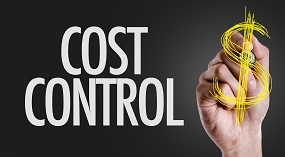5 proactive steps to keep your California workers comp costs under control
 California employers got a bit of springtime good news recently when the state Workers’ Compensation Insurance Rating Bureau (WCIRB) announced a proposal to reduce workers’ compensation premiums by an average of 5 percent beginning in July.
California employers got a bit of springtime good news recently when the state Workers’ Compensation Insurance Rating Bureau (WCIRB) announced a proposal to reduce workers’ compensation premiums by an average of 5 percent beginning in July.
The proposal calls for a premium rate of $2.30 per $100 of payroll beginning July 1, 2016. That’s 10.4 percent lower than the corresponding industry average rate of $2.57 as of January 1 of this year and 5 percent less than the California Insurance Commissioner’s approved average January 1 rate of $2.42.
So why the decrease? The WCIRB cited lower-than-expected medical costs and declining severity for the premium reduction. It’s welcome news for employers struggling to keep costs down, and for employees who are getting evidence-based medically appropriate care under California’s system.
But despite the good news, you can’t rely on these kinds of unexpected surprises to keep your workers’ compensation costs down.
Controlling your workers’ compensation costs is an ongoing and multi-step process that requires constant diligence. Here are five proactive steps you can take to help control those costs:
- Minimize workplace injuries. It starts with your hiring practices. Be alert for “red flags” such as prior complaints, poor performance, or retaliation. Use tools such as background checks, drug screening, post-hire questionnaires, and post-hire medical exams, but be sure to comply with state and federal laws. You also need a robust safety program that includes thorough training and ongoing instruction, and everyone from the top down needs to be onboard with creating a safe work environment.
- Promptly report and investigate accidents. When an employee gets injured, the meter starts running. Immediately investigate and gather all pertinent facts, and report the claim promptly so you can provide appropriate medical management, reduce medical and time loss costs, and provide timely benefits to the injured worker.
- Aggressively manage medical costs. Medical costs still account for a huge portion of claim costs, so be aggressive about minimizing those costs at every opportunity. Build relationships with network medical providers who understand the workers’ comp process, and have systems in place for coordinating nurse case management, conducting utilization reviews, and managing the costly pharmaceutical aspect of claims.
- Get them back on the job ASAP. Help keep your medical, indemnity, and legal costs in check by having a robust return-to-work program. Offer sedentary work or reduced hours for medically restricted employees to get them back to work immediately following a physician’s release. Remember, every day an injured employee is off work is costing you.
- Mind the paperwork. The workers’ compensation process can be complicated, involving a seemingly endless flow of paperwork between employers, injured workers, doctors, pharmacists, physical therapists, attorneys, and others. And every form you file and every payment transaction you conduct is an opportunity for a penalty – or a lawsuit. Be diligent about completing and filing all paperwork thoroughly, accurately, and timely. It’ll save you headaches and added costs down the road.
Is your workers’ compensation program as cost efficient as it could be? Contact the workers’ compensation claim experts at Republic Capital today, and we’ll show you how to keep those costs under control. Also, download our free report, Smart California Work Comp Management – How to Reclaim Your Cash Flow.
